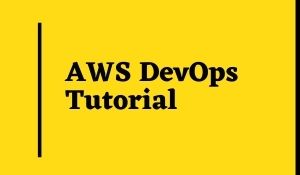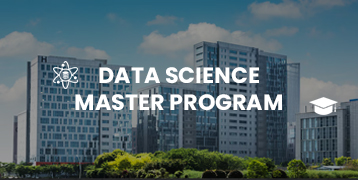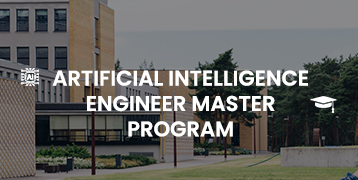
There is a combination of “operations” and “development.”. DevOps is considered the set of practices for the design of agile software. It is becoming a simplified methodology, so consequently, there are various multiple varieties to choose from. In this article, we are going to focus on AWS DevOps, best practices, its architecture, and some of the most useful tools.
But before we step into knowing AWS DevOps, we always should review the few basic concepts and terms.
What is meant by DevOps?
Building off the initial brief description, here is a term called the Amazon defines DevOps: “DevOps is defined as the combination of practices, cultural philosophies, and some other tools that can be increased to an enterprise, company, / organization’s ability to deliver the applications and then those services at a good velocity by improving products with a faster pace than the companies, enterprises, / organizations using the traditional software infrastructure and development management processes.”
DevOps gets together the operations and development groups for an accurate, faster, and more responsive experience of the software delivery.
What is AWS?
AWS is defined as the cloud computing that has surged in consequently and popularity. The customers and users face the choice of more than a dozen different cloud providers, such as Microsoft Azure, Google Cloud, and IBM Cloud Services. The acronym for AWS is Amazon’s cloud provider, which is known as Amazon Web Services. AWS provides all the features and services (e.g., compute capacity, security, and databases) that the customer/user typically gets in-house data/information center. It is becoming the arguably largest cloud offered.
Let us know/understand about AWS and DevOps. Let us now look into what exactly it means.
| Learn more information from the GoLogica “AWS DevOps Engineer Certification Training“ |
What is AWS DevOps?
AWS DevOps is the best Amazon’s answer in implementing the DevOps philosophy by using its cloud platform and can be dedicated to tools and services. Sometimes, “AWS offers a set of flexible services to enable the organizations and companies to more reliably and rapidly build and deliver the products by using DevOps and AWS practices. These services can simplify managing and provisioning infrastructure, automating software release processes, deploying application code, and monitoring the customer/user application and have the infrastructure performance.”
AWS DevOps offers application developer teams with their means to implement continuous delivery and continuous integration (CD/CI). This can enable them to securely store the data/information and version of the application source code while automatically testing, building, and eventually deploying the application to either AWS or on-premises environments.
There are three types of primary categories in the cloud computing technologies:
- Platform as a Service (PaaS)
- Software as a Service (SaaS)
- Infrastructure as a Service (IaaS)
AWS often falls under the category of IaaS—a scalable infrastructure of instant computing in which the customer controls entirely by including operating systems (OSes) and virtual servers.
AWS DevOps Architecture:
In order to get a better idea of what the user/customer is involved in implementing the DevOps on AWS, the user/customer needs to break down the underlying system architecture with AWS EC2. EC2, which is also known as Elastic Compute Cloud lets the customers/users configure all the virtual machines and their underlying resources by leveraging them from the central console.
Load Balancing: It is considered one of the web application architectures that can feature the load balancing. This type of virtual network appliance is used in distributing the EC2 traffic across various available resources of the web server, which can be reduced or increased depending on demand for the traffic. AS provides the Elastic Load Balancing service in order to automate this.
Amazon CloudFront: This service can deliver the content, like a website, and can be included in streaming, dynamic, and static types. It can be optimized in order to operate in conjunction with other types of AWS components and can also be compatible with clouds of non-AWS.
Amazon Security Group: With the consecutive rise in the hacking incidents, security is becoming the priority. This feature can act as the inbound network firewall. Customers should specify the authorized ports, protocols, and source ranges of IP in order to acquire access of EC2. Customers/Users can have the ability to give each EC2 instance in many security groups; each and every member of this team sends the authorized traffic in order to get the appropriate instance.

Elastic Caches: This type of web service can be used to manage the memory cache of the cloud. Elastic caches can decrease the strain on other services by using frequently used data and caching information and data, thereby raising the scalability and performance.
Amazon Relational Database Service (RDS): It can be used to simplify the operations, the setup, and the scalability of a relational database in the cloud-based structure. It can be used to manage the everyday database functions of the administration and tasks and offers the scalable procedure easily and cost-efficiently comes under the relational databases. At present, RDS has the following databases: Microsoft SQL Server, MariaDB, Amazon Aurora, Oracle, MySQL, and PostgreSQL.
Simple Amazon’s Storage Service (S3): The AWS cloud provides two options for backing up, accessing, and storing web application information, data, and some other assets. S3 can give the customers/users a simple UI to manage any amount of information/data, anytime on the web. Customers/users can store the information/data as objects that are within the buckets. These types of objects can be very much accessible, read, added to, or deleted as required.
Amazon Elastic Block Store (EBS): This is referred to as a high-performance block storage answer that helps to manage the information/data partitions and the application logs. The customers/users can be in turn to the EBS while they require long-term persistence and rapid access. The volumes of EBS are very much particularly ideal for the professionals who are dealing with primary storage of the information / data for file systems, databases, or any types of applications that require access in order to raw, unformatted, granular updates, and block-level storage.
Amazon Auto Scaling: This type of service can be used to create the server capacity groups in which the users can reduce or expand as the requirement.
Conclusion:
I hope this article helps you to know the complete details about AWS DevOps. Any questions regarding this topic? Comment in the below section. Happy Learning!
🎯 Updated AWS DataWarehousing Interview Questions
🎯 AWS Solution Architect Interview Questions Updated 2025
🎯 Amazon Web Services (AWS) Interview Questions and Answers
🎯 AWS DevOps Tutorial for Beginners |GoLogica
🎯 Amazon Web Services (AWS) Tutorial for Beginners











